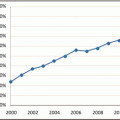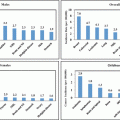© Springer International Publishing Switzerland 2016
Michael Silbermann (ed.)Cancer Care in Countries and Societies in Transition10.1007/978-3-319-22912-6_2525. Caring for Refugees with Cancer: A Case for Training of US Oncology Professionals
(1)
Department of Medicine, Massachusetts General Hospital, Harvard Medical School, 55 Fruit St., Boston, MA 02114, USA
Keywords
CancerRefugeesImmigrantsCommunicationInterpretersPost-traumatic stressHealth literacyLanguage barriersGlobal oncologyAdvocacyIntroduction
It is sobering to reflect on our individual and collective responsibilities towards immigrant patients who, having already suffered so greatly due to war and subsequent displacement, must then confront a diagnosis of cancer. The United States has always been a country of immigrants, and from its early history through present day, it has provided a safe haven for war refugees, from individuals seeking asylum to children fleeing violence and gang warfare. Unfortunately, however, medical care for refugees and asylum seekers is distributed across a variety of healthcare systems and networks across the country, without standard protocols or national guidelines, and referrals for specialist care, including oncology and palliative care services, are typically provided by generalist clinicians working in primary care settings or neighborhood clinics. Specialists have expertise in their respective fields, but typically no training at all in meeting the complex physical and psychological needs of this vulnerable population. Ultimately, clinicians have no developed, structured framework with which to address the multiple needs of these patient populations who have suffered such a wide range of atrocities. The psychological repercussions of their experiences have long-term effects on their mental health, and it is imperative that clinicians handle the emotional, as well as physiological, needs of these patients with sensitivity and care. Furthermore, given the multitude of language and cultural barriers between Western trained clinicians and immigrant patient populations, the challenge remains to provide personalized care that is both culturally attuned and clinically beneficial, and addressing this challenge will require partnerships with professional interpreters and social workers who are trained to meet these needs.
Growing Interest in Global Health
American physicians have a long history of involvement in global health, serving on volunteer missions and performing complex surgeries in poor countries or providing primary care, acting as consultants to offer remote opinions on complex cases, or through committed service to help build capacity in countries with limited resources. In 2002, the number of cancer deaths worldwide was estimated at 6.2 million, 55 % in the developing world [1]. In 2013 the number rose to 13 million, 69 % in developing world [1]. In 2011, the United Nations recognized noncommunicable diseases such as cancer as problems that concern the global community. In response to the UN call for action, the National Cancer Institute (NCI) established the Center for Global Health [2]. This agency was created to help coordinate the global portfolio and support the open exchange of scientific and clinical knowledge, and to provide a framework to encourage bilateral cooperation in addressing issues and problems in public health, medicine, science, and cancer research. There are several NCI designated Cancer Centers with an active presence in Africa, among them the Fred Hutchinson Cancer Center and its program in Uganda, the University of North Carolina’s program in Malawi, the University of Maryland’s program in Nigeria, the University of Michigan’s program in Ghana, Indiana University’s program in Kenya, and Harvard’s programs in Botswana, Rwanda, and Haiti (the last two in collaboration with Partners in Health).
Although these programs have different priorities, they share a common goal of establishing cancer control programs that address the fundamental needs of their respective partner countries. Each of these programs has ties to local governments and institutional support in the United States. They focus on prevention, public education campaigns to raise awareness of cancer, establishing databases, and the provision of clinical services for patients with cancer, ranging from anticancer therapy to palliative measures. US oncologists involved in global work are currently confronting the morally complex issue of how best to advise physicians and governments in areas with high prevalence of cancer but without the infrastructure, trained personnel, and medications needed to meet the needs of all patients [3]. Among US oncologists involved in global health, there is a growing sense of urgency to step up national efforts to help reduce global disparities in outcomes for patients with cancer and attend to the suffering of those afflicted with the disease.
A Country of Immigrants
In the United States, 57 million people, 20 % of the US population, speak a language other than English at home. Approximately 25 million people, 8.6 % of the US population, are defined as having low English proficiency, or LEP, and a considerable number of those with LEP have low literacy in their native languages as well [4, 5]. Together, these factors place this population at a distinct disadvantage when seeking medical assistance. Immigrants with LEP are at risk for longer hospital stays and readmissions after discharge simply because they did not properly understand instructions, and they are also at greater risk for infections and falls during hospitalizations [6, 7]. Immigrants and Americans from ethnic minorities diagnosed with cancer have poorer outcomes than comparable nonimmigrant groups, with lower screening and survival rates, more adverse effects, poorer quality of life, and greater distress due to multiple factors including barriers to care and misunderstandings [8–11].
The safety and welfare of patients with low English proficiency depends on the availability of trained interpreters, and consequently, medical interpreters are fast becoming key members of clinical care teams [12]. Some are born overseas and are native speakers of the languages for which they interpret, others were raised in bilingual households, and still others are English speakers who acquired a second language while studying or working abroad [13]. However, despite the growing need for medical interpreters, many healthcare institutions across the United States still lack formal interpreter services and, as a result, rely on informal interpreters such as nonclinical staff, relatives, and friends of the patient. Research suggests that using ad hoc interpreters—as opposed to professional interpreters—can lead to an increase in clinically consequential errors [5, 14]. To complicate matters, medical interpretation remains an unregulated industry, without nationally recognized professional standards. There is no accepted curriculum for interpreter training, no recognized certification at a national level and no single model that defines and demarcates the interpreter’s role [13, 15].
Multiple metaphors have been used to characterize the ideal role of the medical interpreter, from conduit to detective, illustrating the range of opinion as to the appropriate extent of the interpreter’s involvement in the clinical triad [13]. Some institutions expect professionals to play a strictly technical role, emphasizing the need for accuracy, restraint from additions, editions, and omissions, and, most important, neutrality [13]. At Massachusetts General Hospital, in addition to having trained medical interpreters, each inpatient care unit houses a mobile interpreter phone, which can be rolled into a patient’s room and hooked up to a wall jack to provide telephonic interpretation on demand in any language. Some hospitals provide patients with an “interpreter requested card” in their language and in English that can be used throughout the care process to notify clinicians and other staff that the patient requires an interpreter. This strategy visually reminds staff of the patient’s LEP status and helps encourage patients to participate in their own care. Other models and healthcare institutions lean towards a co-constructive dimension of the interpreter role that emphasizes the need to understand not only the linguistic content, but also the cultural context [13]. Programs dedicated to caring for refugees typically favor a model that extends the role of the interpreter beyond that of a language and cultural broker, adding a third component of advocacy. Examples of advocacy might involve speaking up when a patient appears not to have understood an explanation, escorting patients to their appointments and tests, making phone calls on the patient’s behalf, or engaging in community level activities to raise awareness of cancer-screening services.
The Role of the Medical Interpreter
Medical interpreters have expressed the view that they are not always allowed to provide context or meaning and are sometimes marginalized as a consequence [16]. Interpreters are also sensitive to relationships and power dynamics in clinical settings. They may perceive a clinician as brusque and disinterested, or pick up on time pressures requiring doctors to rush through the interview, basically quizzing or interrogating the patient without allowing sufficient time to explore their answers or concerns.
A Thai interpreter shares a patient’s narrative outside the exam room after she was told to not eat rice. The order provokes the opposite of the clinician’s intent:
… You have to understand, they were surviving through war, lots of family members, where they have nothing, … but for you to say “don’t eat rice,” it’s almost like telling them, hey, I’m going to cut one of your arms off … “wow, [patients will say] I lived off from nothing for me to be here to have food! food! food!; and now you want to tell me I can’t eat this?… no, I’m going to eat before I’m going to die!!” [16].
This rapid fire exchange requires the interpreter to think very quickly about how to present concepts in a way that will allow the listener in either direction to better understand the meaning and intent of the speaker and calls for a three-way relationship of trust, interest, and respect.
Clinicians are growing more familiar with the professional interpreter role. Some remain disdainful of patients with limited English proficiency but, on the whole, physicians are more cognizant of the need to involve trained interpreters to minimize errors, to promote clarity, and to engage patients and families in decision-making regarding cancer treatment. Oncologists are sometimes frustrated by the interpreter’s lack of knowledge of basic terms and expressions used commonly in cancer medicine, and are sometimes reminded by interpreters that there are actually no words in the native language that describe the concept the doctor seems keen to discuss. Programs designed to increase the interpreter’s knowledge of basic cancer terminology and to train cancer clinicians to work collaboratively with interpreters are sorely needed [12, 17].
Stay updated, free articles. Join our Telegram channel

Full access? Get Clinical Tree





